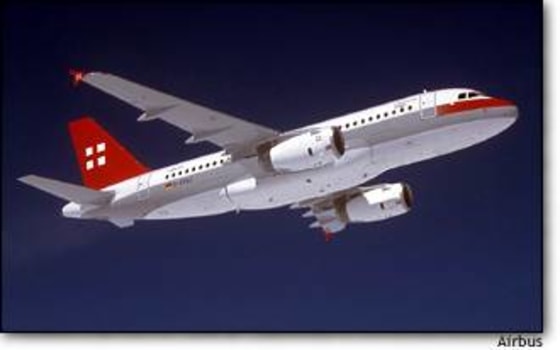Lufthansa wanted to give some of its best customers everything a business executive would want — direct flights to a destination with quick service through the airport, a luxurious ride and attentive service. But how could they provide the amenities of a corporate jet without sacrificing the perks of an airline?
So was born the airline’s new business-only service. Flights began last summer between Newark, N.J., and Dusseldorf, Germany, using a Boeing Business Jet — essentially a version of the 737-700. That’s still used on a new route from Newark to Munich, and the Dusseldorf routes (they added one to Chicago) use long-range versions of Airbus’ A319, which has a similar size and range.
The flights are operated by a Swiss executive jet service, Privatair, which provides the planes and the pilots. Lufthansa provides the service, including a special check-in and frequent-flier miles, which can be applied on the Star Alliance.
The airline’s service was born largely out of their business customers’ needs. The Newark-Dusseldorf route, for instance, was appealing to executives who wanted quicker, direct service to the smaller German city without changing planes and could easily pay for it. (A business-class ticket on the direct flight costs about $5,900, the same as on a non-direct route from JFK.) After 9/11, it had been hard to fill the route using an Airbus A340, with its space for 250 passengers.
But a smaller number of business travelers were eager for the service and willing to pay, especially since a flight to New York would require a stopover. Lufthansa found the same to be true with Chicago-Dusseldorf route as well as the Newark-Munich route, which was driven in part by requests from European pharmaceutical executives who wanted a quick service to operations in New Jersey. All the flights are under eight hours,
“The experience tells us now that there is a customer base out there that demands it,” says Thomas Winkelmann, Lufthansa’s vice president for the Americas. “Those who pay more than others have to get more than others.”
And get more they do. Each flight has a maximum of 48 passengers, all traveling in what amounts to at least business-class comfort. Seats recline fully, and beds were recently installed. Each passenger gets food, drinks, a personal video player and a power outlet for laptops. And a passenger can disembark in Newark, make it though Customs and baggage claim and into a taxi in an average of 13 minutes — or into the free limousine the airline provides. In addition to the pilots, who are hired by Privatair, four cabin crew are assigned to each flight.
“It’s like flying in the ’50s. It’s a maximum of 12 passengers per flight attendant,” says Winkelmann. “Our parents, or maybe our grandparents, thought this is the most luxurious way to travel.”
Needless to say, the new service won’t replace Lufthansa’s long-haul routes, which rely on passengers being fed into its major hubs, such as Frankfurt. But it is a clear money-maker for them, in part because the economics of selling seats becomes very simple. While those business-class fares would usually be subsidizing passengers in the back of the plane, the smaller flights can operate with just a fraction of the plane filled and still make money.
Beyond that, they seem very keen on creating the service as a new top-quality offering, not unlike the Concorde.
“On the long haul, we have to concentrate on the premium passengers,” Winkelmann says. “I think the banker that is forced to fly economy class does it once, does it twice, and then goes to his boss and says, ‘I cannot work after sitting in row 44 for 11 hours from L.A. to Europe. I have to sleep after that.’”
Whether it’s catching sleep or avoiding a scramble through airports, the new, smaller jets give have given Lufthansa — and competitors who will presumably join the luxury game before long — the chance to offer something truly different ... to those who can afford it.
